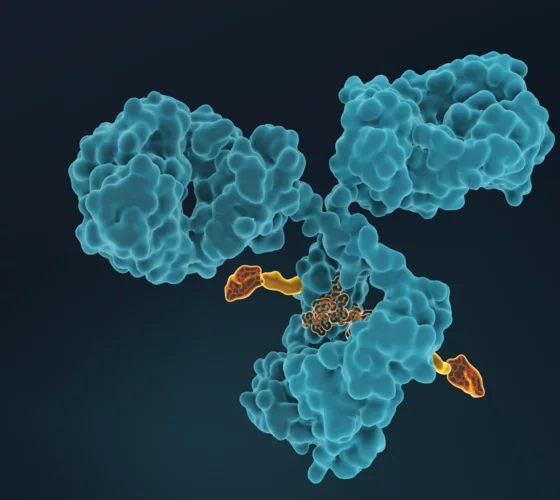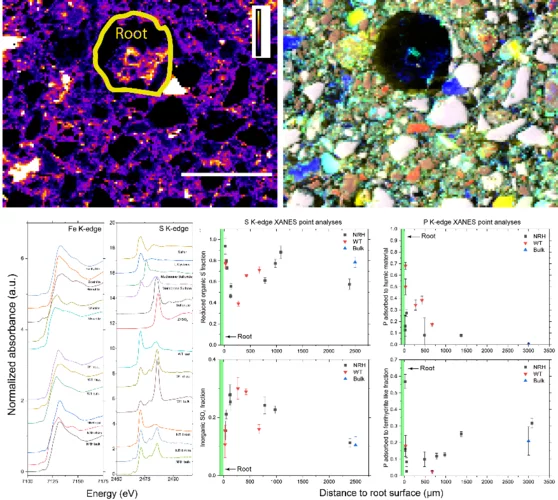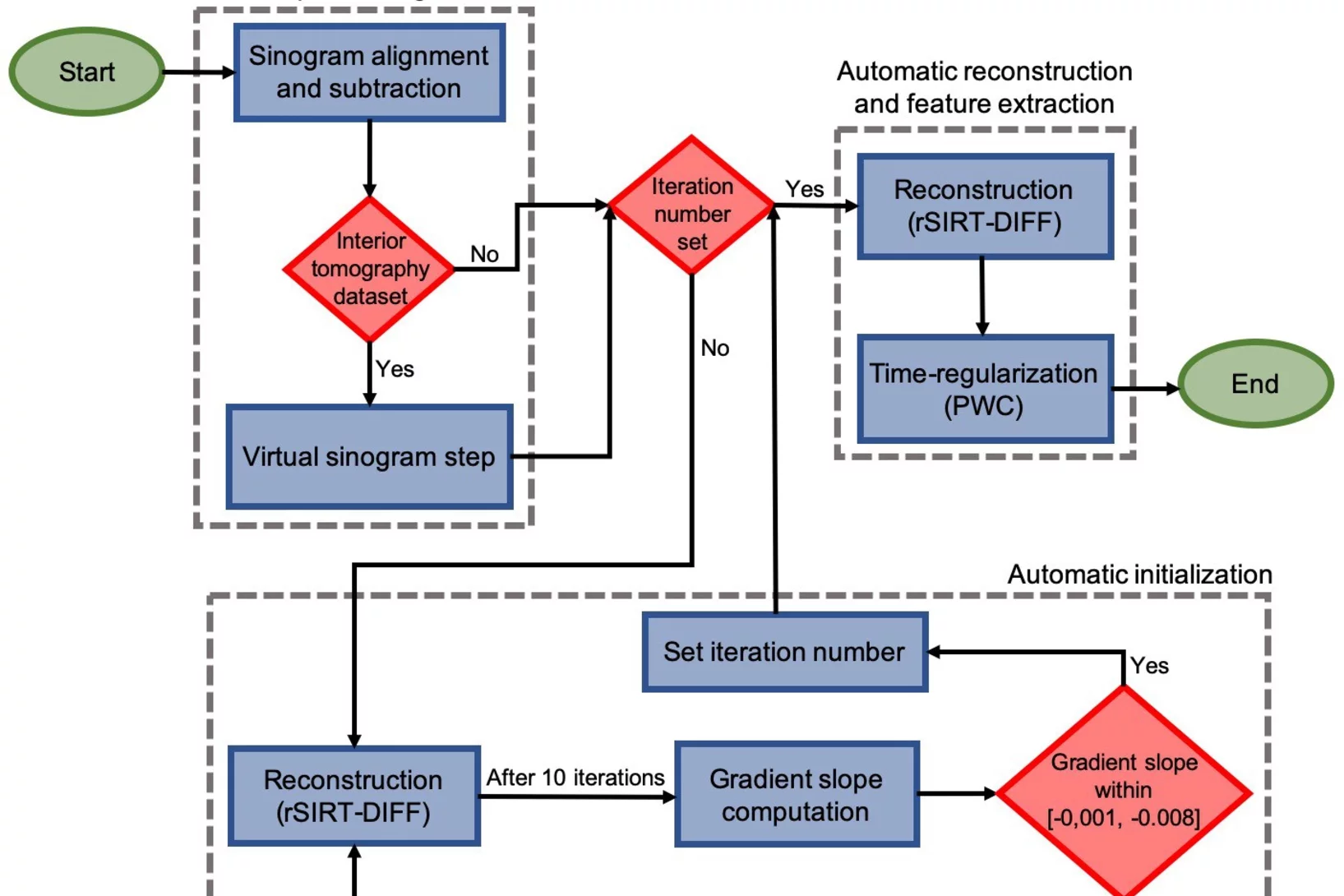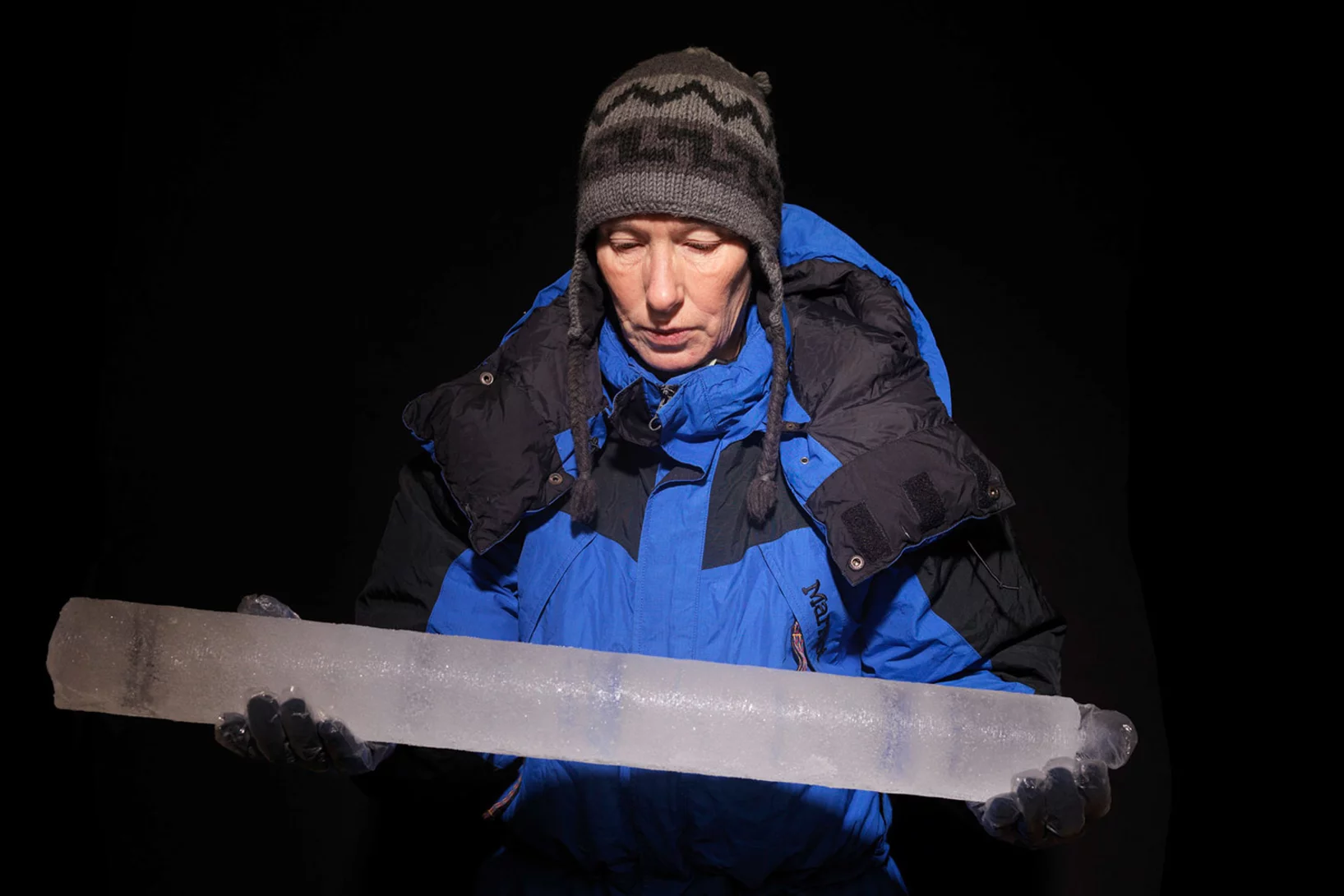Am PSI widmen sich mehrere Projekte wichtigen Forschungsfragen rund um das Coronavirus Sars-CoV-2 und den daraus resultierenden Erkrankungen. Wir informieren über Aktivitäten und Vorhaben, zum Beispiel zu Untersuchungen von Lungengewebe, zur Produktion von Proteinen und Antikörpern oder über Ideen für neue Forschung zu Covid-19.
Nützliche Links
Phosphorus recovery from wastewater: Nitrogen K-edge micro-XANES spectroscopy unravels the effects of nitrification inhibitor on fertilizer phosphorus uptake of maize
Phosphorous containing fertilizers are essential to feed the growing population on earth. Because phosphorus (P) is a scarce resource in the European Union, recovering P from wastewater and sewage sludge has become extremely important. However, the availability of P to the plant is limited in such recycling P fertilizers. To overcome this problem, co-fertilization with nitrogen (N) in the form of ammonium and nitrification inhibitors, is a promising pathway. By applying the novel N K-edge micro-XRF and micro-XANES methods at the PHOENIX beamline on the soils, we could verify that a nitrification inhibitor indeed promotes ammonium fixation in fertilized soils, and hence causing a slow-release of temporarily fixed ammonium. This deceases local pH, making P better available to plants.
Uncovering the short range order and local distortions in high entropy alloys using EXAFS
High entropy alloys (HEA), medium entropy alloys and multi-phase compositionally complex alloys (CCA) have gained much attention in the last 20 years because of their outstanding mechanical properties. Such baseless alloys provide different open questions on local chemical ordering, lattice distortions, orbital hybridization and/or charge transfer which define the very nature of alloys’ mechanical properties. By combining EXAFS measurements in the rarely served tender x-ray range (PHOENIX-SLS, Al K-edge) and at higher X-ray energies (BM08-ESRF, transition metal K-edges), local chemical ordering in a CCA, Al8Cr17Co17Cu8Fe17Ni33 was quantified showing preferred Al-Ni and Al-Cu pairs. In addition, slight structural distortions, much lower than the predicted ones of metallic radii, were found.
4 Lernende an den Schweizermeisterschaften
Die PSI-Elektroniker EFZ sind unter Strom
From magnetic order to quantum disorder in the Zn-barlowite series of S = 1/2 kagomé antiferromagnets
We report a comprehensive muon spectroscopy study of the Zn-barlowite series of S=1/2 kagomé antiferromagnets, ZnxCu4−x(OH)6FBr, for x = 0.00 to 0.99(1). By combining muon spin relaxation and rotation measurements with state-of-the-art density-functional theory muon-site calculations, we observe the formation of both μ–F and μ–OH complexes in Zn-barlowite. From these stopping sites, implanted muon spins reveal the suppression of long-range magnetic order into a possible quantum spin liquid state upon the increasing concentration of Zn-substitution.
SwissFEL: Die Schwarze Mörtelbiene fühlt sich hier pudelwohl
Für den Bau des SwissFEL wurden 2013 rund fünf Hektar Wald gerodet und zu neuem Lebensraum für Flora und Fauna umgestaltet. Jetzt haben Biologen und Forstingenieure Zwischenbilanz zum Erfolg des Renaturierungsprojekts gezogen – und sind begeistert.
Araris Biotech AG kommuniziert erfolgreiche Finanzierungsrunde
Araris Biotech AG, das jüngste Life-Science Spin-off des PSI, hat erfolgreich eine Finanzierungsrunde in Höhe von CHF 15.2 Mio. abgeschlossen. Diese Mittel bilden eine hervorragende Basis, um die Entwicklung der vom PSI lizensierten Technologien weiterzutreiben, und vielversprechende Wirkstoffkandidaten zu identifizieren.
Dr. Philipp Spycher, CEO der Araris Biotech AG, startete seine unternehmerischen Aktivitäten im Rahmen der PSI Founder Fellowship. Dieses Förderprogramm des PSI unterstützte ihn dabei, seine Geschäftsidee auf Basis der Technologie, die er am PSI mitentwickelt hat, in Gang zu bringen.
Das PSI gratuliert Araris und freut sich darauf, die weitere Entwicklung von Araris begleiten zu dürfen.
Front passivation of Cu(In,Ga)Se2 solar cells using Al2O3: Culprits and benefits
In the past years, the strategies used to break the Cu(In,Ga)Se2 (CIGS) light to power conversion effi- ciency world record value were based on improvements of the absorber optoelectronic and crystalline properties, mainly using complex post-deposition treatments. To reach even higher efficiency values, fur- ther advances in the solar cell architecture are needed, in particular, with respect to the CIGS interfaces. In this study, we evaluate the structural, morphological and optoelectronic impact of an Al2O3 layer as a potential front passivation layer on the CIGS properties, as well as an Al2O3 tunneling layer between CIGS and CdS.
Sodium-ion batteries: a study of the structural and electrochemical properties of the layered cathode material NaxMnyO2
Being able to replace Lithium by the much more abundant sodium for new batteries would be an important asset for energy storage. For example, NaxMnyO2 cathodes would offer a high initial specific charge and a relatively high working potential. Despite long, intensive research of the electrochemical properties of these materials, the open key question remains unresolved: Where does the sodium goes to in the charging /discharging process. Unfortunately, the (de)sodiation mechanism in those materials was not completely understood, especially in terms of types of phases in which Na stays during cycling, which in turn impeded the optimization of its performance. Using the unique tender energy range of the PHOENIX beamline, we used Na K-edge X-ray absorption spectra measurements to gain a better understanding about the Na atomic positions in phases appearing during cycling. Thanks to this unique method, we established that observed high capacity in NaxMnyO2 is due to the high-voltage phase being an intergrowth structure between P2 and O2 type phases were Na ions stays both in tetrahedral and octahedral sites.
Abwarten und Kristalle züchten
Am PSI entschlüsseln Forschende die Struktur der Proteine von Bakterien und Viren. Mit diesem Wissen lassen sich beispielsweise Medikamente gegen Infektionskrankheiten entwickeln. Doch zuallererst muss ein äusserst kniffliges Problem gelöst werden: die Kristallisation der Moleküle.
Lithium-ion batteries: following the redox reaction of oxygen and transition metals in the Li1.2Mn0.6Ni0.1Co0.1O2 electrode using X-ray absorption spectroscopy
The new generation of cathode materials from the Li-rich NMC (nickel-manganese-cobalt) group are under constant investigation due to their extremely high energy densities resulting from redox reactions involving both transition metals and lattice oxygen. Although a lot of research has been done so far, the exact mechanism of lithium (de)insertion in those materials, especially the reactions involving redox reactions of lattice oxygen is still elusive. Due to the particular battery design the observed reactions starts at the surface of the electrode that contacts the electrolyte and, as the reaction continues, goes deeper into the bulk structure. In order to follow the reactions taking place in the Li-rich NMC materials we aimed to exactly distinguish and characterize the phase transitions taking place on the surface and within the bulk of the Li1.2Mn0.6Ni0.1Co0.1O2 electrode. To do so we used comprehensive XAS measurements at the PHOENIX beamline, taking advantage of the unique options to perform in situ experiments in the soft energy range to study both the Oxygen K edge and the L edges of Ni, Co and Mn.
Enhanced Stability of a Pyrophosphate cathode for Na-ion batteries
The structural changes of Na3.32Fe2.11Ca0.23(P2O7)2 during several charge discharge cycles is viewed by its powder pattern and selected cell parameter evolution.
Harnessing components from the optical internet for programmable spectroscopy
A novel concept for extracting information from spectra where traditional post-processing procedures fail, dubbed ‘software-defined spectroscopy’, offers a fresh approach to high-resolution terahertz spectroscopy. The new method implements an ‘optical comb’ and combines it with a programmable modulator, all using components from the optical internet.
Dr. Manuel Guizar-Sicairos elected as Fellow member of The Optical Society (OSA)
Dr. Manuel Guizar-Sicairos, beamline scientist at the cSAXS beamline, was elected as a Fellow Member of The Optical Society (OSA) for seminal contributions to methods and applications of coherent lensless imaging, ptychography, x-ray nanotomography, and new modalities of x-ray microscopy.
Root induced soil deformation influences Fe, S and P: rhizosphere chemistry investigated using synchrotron XRF and XANES
Taking up nutrients from the soil is key to plant growth. Understanding and potentially controlling this process is important when growing food but also when caring for natural habitats, which are the basis for life on Earth. Typically, nutrients are tightly chemically bound to the soil, and roots need to create a chemical environment to harvest nutrients. Here we use the special capabilities X-ray microscopy with tender X-rays to study the chemical changes of sulfur, phosphorus, and iron in the vicinity of plant roots (rhizosphere). We can show that Fe is slightly reduced, S is increasingly transformed into sulfate (SO42−) and phosphorus (P) is increasingly adsorbed to humic substances in this enrichment zone around the root.
Demonstration of Muon-Beam Transverse Phase-Space Compression
We demonstrate efficient transverse compression of a 12.5 MeV=c muon beam stopped in a helium gas target featuring a vertical density gradient and crossed electric and magnetic fields. The muon stop distribution extending vertically over 14 mm was reduced to a 0.25 mm size (rms) within 3.5 μs. The simulation including cross sections ...
Unerwartetes Aufwölben eines Proteins
Forschende haben dem lebenswichtigen Protein Cytochrom C ein Geheimnis entlockt, das dieses bisher gut zu verbergen wusste. Messungen am Freie-Elektronen-Röntgenlaser SwissFEL zeigen Strukturänderungen, welche die Wissenschaft für diese Art von Biomolekül bisher ausgeschlossen hatten.
Refined diagnosis of the “concrete disease”
When bridges, dam walls and other structures made of concrete (cement and aggregates such as sand/gravel) are marked by map-like cracks after a few decades, the diagnosis is ASR (alkali-silica Reaction), in popular science terms also called “concrete disease or concrete cancer”. The ASR-induced microscale crack initiation can hardly be modelled, mainly due to our limited knowledge of the structure and property of the ASR products. Using X-ray absorption micro-spectroscopy at the PHOENIX beamline of the Swiss Light Source (SLS) allowed a refined diagnosis of ASR products by providing new insights into the crystallinity and structure of ASR products with micro-scale resolution.
Installation of Heidelberg DWL66+
Heidelberg DWL66+ direct laser writer, funded by ANAXAM, is in operation now. It is a new photolithographic system closing the gap between the mask aligners on one side and the Nanoscribe two-photon 3D lithography system on the other. It is equipped with semiconductor laser with the wave length of 405 nm and is capable of exposing the minimum feature size down to 0.3 µm on wafers up to 200 mm or 9"x9" mask blanks.
Messungen am PSI ermöglichten detailliertes Verständnis der Gen-Schere
Das PSI gratuliert Emmanuelle Charpentier und Jennifer Doudna zum diesjährigen Nobelpreis für Chemie. Experimente an der Synchrotron Lichtquelle Schweiz SLS im Jahr 2013 ermöglichten es, die Struktur des Proteinkomplexes CRISPR-Cas9 aufzuklären.
Improved Interfacial Stability of Ni-rich Oxide Full-Cells
PSI researchers have identified a novel electrolyte additive, allowing extended voltage range of Ni-rich oxide full-cells, while keeping excellent performance. The instability of cathode–electrolyte interface causes the structural degradation of cathode active material and the electrolyte consumption, resulting in a rapid capacity fading and shortening battery life-time. The PSI-identified additive help to alleviate these problems and extend battery life-time.
Electroless Deposition of Ni–Fe Alloys on Scaffolds for 3D Nanomagnetism
3D magnetic nanostructures are of great interest due to the possibility to design novel properties and the benefits for both technological applications such as high-density data storage, as well as more fundamental studies.
One of the main challenges facing the realization of these three-dimensional systems is their fabrication, which includes the deposition of magnetic materials on 3D surfaces. In this work, the electroless deposition of Ni–Fe
on a 3D-printed, non-conductive microstructure is presented.
Technology Briefing: Smart Energy Applied Solutions
Mittwoch, 11. November 2020, 13.30 –18.00 Uhr
Empa, Überlandstrasse 129, 8600 Dübendorf (Teilnahme möglich vor Ort ODER via Zoom)
Online-Anmeldung: www.empa-akademie.ch/technology
Das «Technology Briefing» hat zum Ziel, Industrie und Gewerbe über aktuelle praxisrelevante Fragestellungen zu informieren. Die Referenten von CSEM, Empa und PSI und aus der Industrie bieten einen ausgewogenen und praxisbezogenen Überblick über aktuelle Technologien. Neben der Information dient die Veranstaltung auch dem Erfahrungsaustausch mit ExpertInnen und der Möglichkeit, Zusammenarbeits- und Innovationspotentiale zu identifizieren.
Schilddrüsenkrebs gezielter bekämpfen
PSI-Forschende haben einen Weg gefunden, eine Form von Schilddrüsenkrebs gezielter und mit weniger Nebenwirkungen zu behandeln. Sie steigerten die Aufnahme eines Antitumormittels in Krebszellen. Die Ergebnisse erschienen im Fachblatt Theranostics.
Automatic extraction of dynamic features from sub-second tomographic microscopy data
A fully automatized iterative reconstruction pipeline designed to reconstruct and segment dynamic processes within a static matrix has been developed at TOMCAT. The algorithm performance is demonstrated on dynamic fuel cell data where it enabled automatic extraction of liquid water dynamics from sub-second tomographic microscopy data. The work is published in Scientific Reports on 2 October 2020.
Automatic extraction of dynamic features from sub-second tomographic microscopy data
A fully automatized iterative reconstruction pipeline designed to reconstruct and segment dynamic processes within a static matrix has been developed at TOMCAT. The algorithm performance is demonstrated on dynamic fuel cell data where it enabled automatic extraction of liquid water dynamics from sub-second tomographic microscopy data. The work is published in Scientific Reports on 2 October 2020.
Iodsäure beeinflusst Wolkenbildung am Nordpol
Ein internationales Forschungsteam hat einen neuen Faktor identifiziert, der die Bildung von Feinstaubpartikeln in der Arktis vorantreibt. Dabei handelt es sich um Iodsäure, eine chemische Verbindung, die in der Region zuvor noch nicht gemessen wurde.
«Wir waren schockiert, wie weit die Schmelze schon fortgeschritten ist»
Eine internationale Expedition unter Beteiligung des Paul Scherrer Instituts PSI entdeckt weit fortgeschrittene Gletscherschmelze auf über 4000 Metern Höhe am Grand Combin im Wallis. Für das Projekt „Ice Memory“, das Eisbohrkerne als Klimaarchiv für künftige Forschergenerationen bergen will, könnte es damit in den Alpen fast zu spät sein.
Swiss National Science Foundation Ambizione grant for Franziska Hagelstein
Franziska Hagelstein has been awarded a Swiss National Science Foundation Ambizione grant with PSI as host institution. She joined the particle theory group (NUM, Laboratory of Particle Physics LTP) in October 2020. In the near future she will be accompanied by a PhD student.
Winzlinge im Rampenlicht
Die Welt der Mikroben und Viren ist extrem alt und äusserst vielfältig. Mit den Grossforschungsanlagen des PSI blicken Forschende tief in diesen fremden Kosmos und erkunden vor allem Proteine exotischer Wesen.
Two-color snapshots of ultrafast charge and spin dynamics
In a joint research effort, an international team of scientists lead by Emmanuelle Jal (Sorbonne Université) performed a time-resolved experiment at the FERMI free-electron laser to disclose the dynamic behavior of two magnetic element of a compount material in only one snapshot. The X-ray Optics and Applications group developed a dedicated optical element for this experiment that is usable with two different photon energies (colors) simultaneously.





























